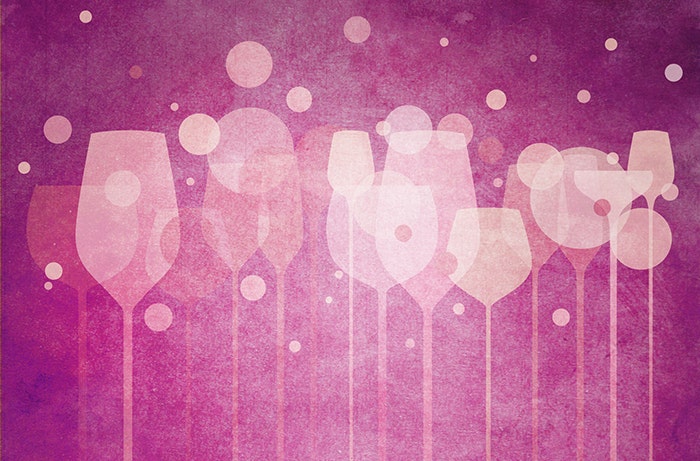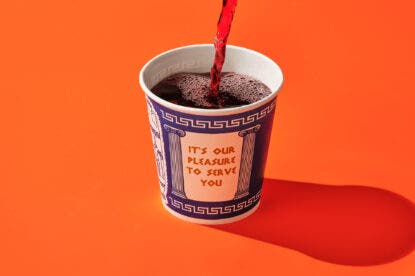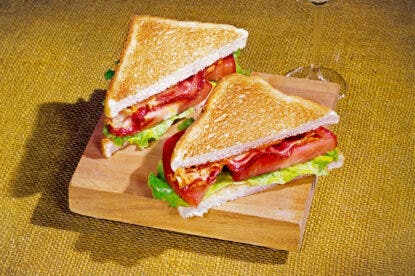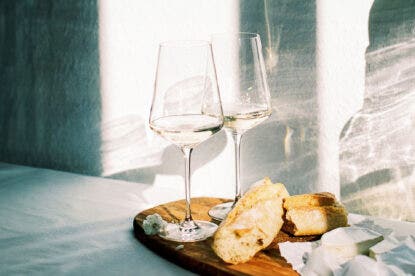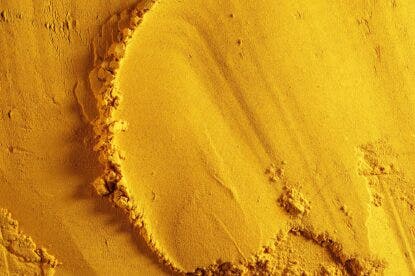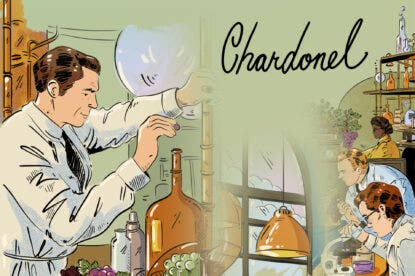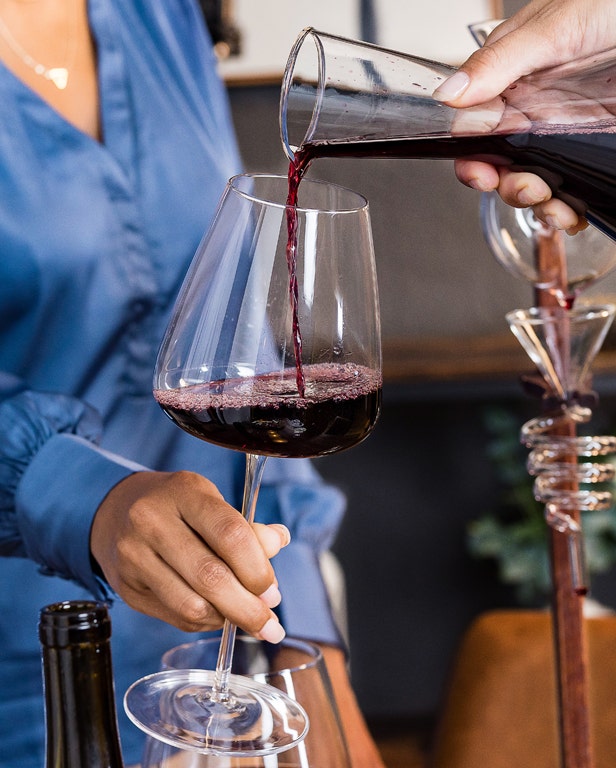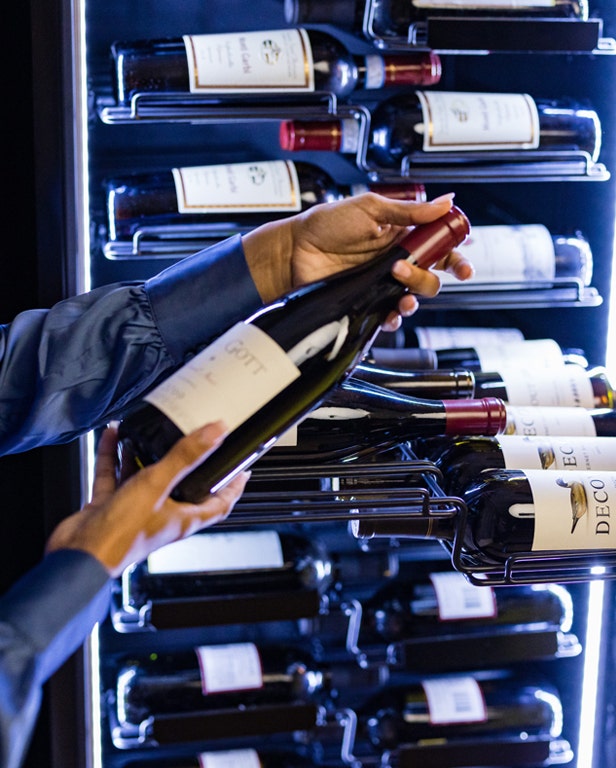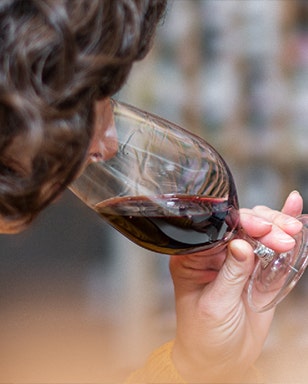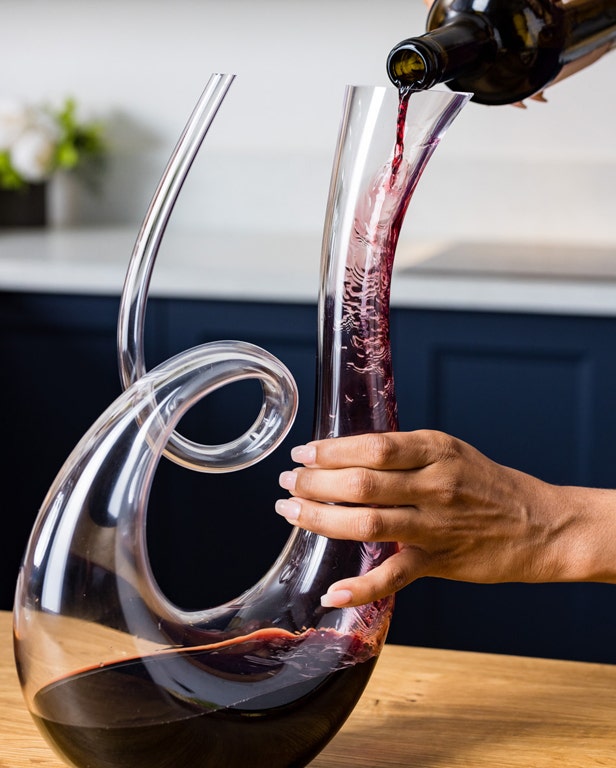When it comes to sparkling wine, retro advertising provides a pictorial record on how it’s been enjoyed in the popular glasses of the times—flutes and coupes. Inextricably linked to celebrations and the good life, both enjoy enduring appeal but also carry sound arguments against them. Now, with the popularity of new-wave tulip glasses, we show that shape really does matter.
Coup
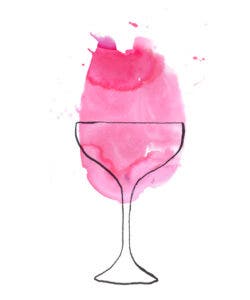
Style Cred: ★★★★★
Wine Kudos: ★★
Verdict: Ideal for a Gatsby-esque bash
The coupe is famed for a salacious but entirely false myth about its creation—that it was modeled from Marie Antoinette’s breast. The story has so endured that British supermodel Kate Moss was the latest to serve as “mold” for a customized Dom Pérignon coupe. In actuality, the coupe was invented in 1660s England. When it comes to sparkling wine, coupes may look fabulous, but they hold neither effervescence nor aroma, as both dissipate quickly. This, however, may be an advantage.
“I use a lot of different types of vessels,” says Ariel Acre, beverage director at Manhattan’s Riddling Widow, an underground Champagne parlor. “The coupe really allows the wine to breathe. The fortunate—and unfortunate—thing about a coupe is that it allows so much aeration that the wine becomes less effervescent, but some wines with much nuance and complexity can benefit. There is more harmony between effervescence and flavor.”
Acre uses coupes for richer, more mature sparkling wines that need a while to open up.
Flute
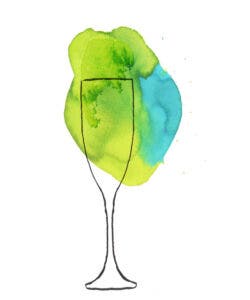
Style Cred: ★★★
Wine Kudos: ★★
Verdict: Perfect for large parties when toasting is obligatory
Nothing signals celebration like the flute. Unfortunately, the narrow opening and high fill level make it impossible for the wine’s aromas to unfold, and they are becoming taboo in professional circles. On the plus side, the flute offers an ideal serving size and displays rising bubbles to perfection, making it ideal for parties. Its shape helps preserve effervescence, which is useful when a best man or dignitary gives a lengthy speech. You’re also not likely to spill while toasting.
The flute has its place, but as Jaimee Anderson, assistant head sommelier at the Parisian temple of luxury La Réserve explains, it’s losing ground.
“When it comes to apéritif, we will usually serve our Champagne in a flute, but when a guests orders vintage Champagne, I like to propose serving it in a larger glass,” he says. “More often than not, guests still prefer the traditional flute. However, I’m seeing more and more guests asking for larger glasses. I saw the same thing in Los Angeles. The word is getting out.”
Tulip Redux
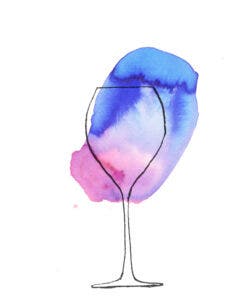
Style Cred: ★★★★★
Wine Kudos: ★★★★★
Verdict: Simple perfection, as pleasing to the eye as to nose and palate
Frustrated by serving fine Champagne in restrictive flutes, Philippe Jamesse, sommelier at Michelin-starred restaurant Les Crayères in Reims, Champagne, collaborated with a local glass manufacturer to devise the ideal sparkling-wine glass. The goal was to both allow bubbles to form and the all-important aromas to unfold. The result was the “Jamesse Grand Champagne” glass. Michel Drappier, owner of the namesake Champagne house, is a great fan, calling it “the ultimate glass.” He lauds its round shape that narrows toward the top, its steep base that enables bubble formation, and its light weight in relation to the amount of bubbly it holds.
“It allows perfect expression of the Champagne,” he says. “It enhances discreet notes that other glasses do not reveal. But be careful, it also reveals faults.”
Since its debut in 2008, variations of this new-wave tulip have been adopted by numerous glass manufacturers and even by Champagne houses, including Krug, whose “Joseph” glass is named after the house’s founder.
Tapering Wine Glass
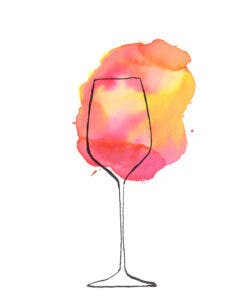
Style Cred: ★★★
Wine Kudos: ★★★★★
Verdict: Excellent for fizz lovers in the absence of a new-wave tulip glass
Don’t despair if you have fine fizz but can’t get your hands on a new-wave tulip glass. A good wine glass, like Zalto Denk’Art Universal, will do a similar job. Blanc de noirs and rosé styles do especially well in a red Burgundy glass.
Benoît Gouez, chef-de-cave at Moët & Chandon says, “The glass in which a Champagne is served can greatly affect the tasting experience. The ideal glass allows the Champagne to breathe and develop and is narrow enough at the top to bundle all of the flavors in your nose and palate.”
Gouez likes the Moët & Chandon Grand Vintage glass by Riedel, but if that’s not available, he recommends a larger, tapering wine glass to “appreciate the expanding aroma, to really get my nose into the wine.”
“This also allows the Champagne to develop to its full potential,” he says. “The more the Champagne breathes, the fruitier and expansive it becomes, which makes for a beautiful tasting experience.”
Published: January 30, 2017




